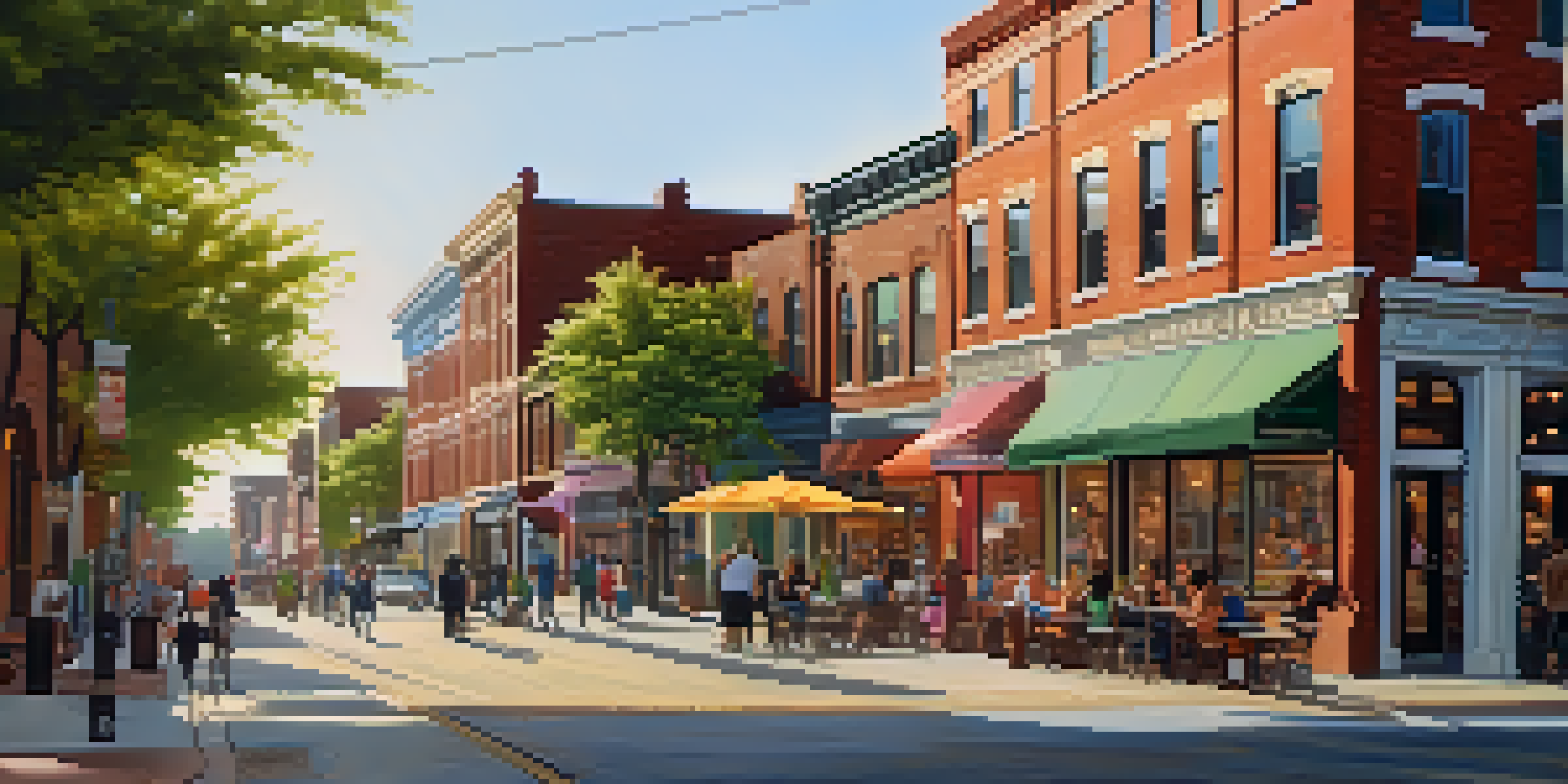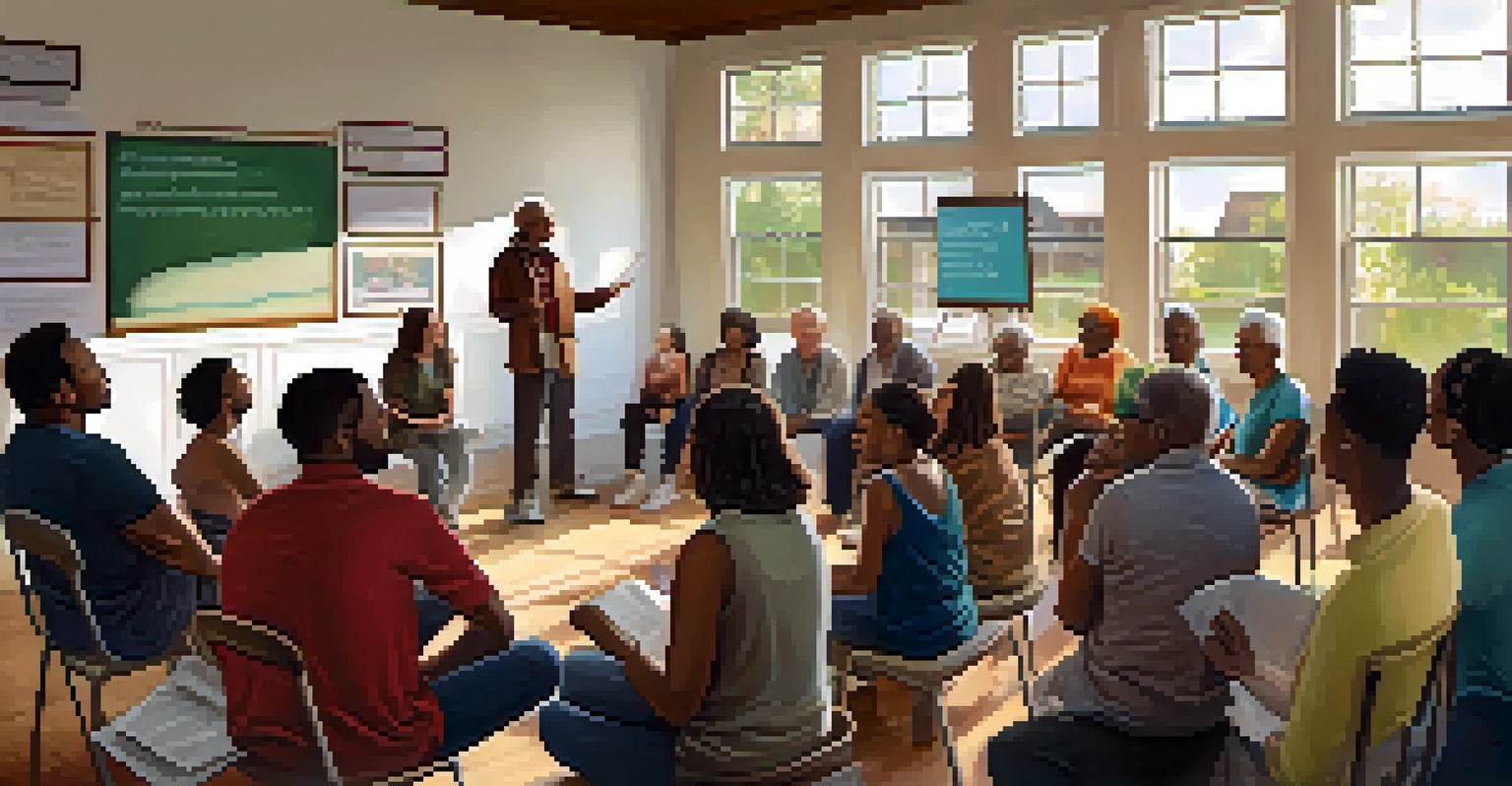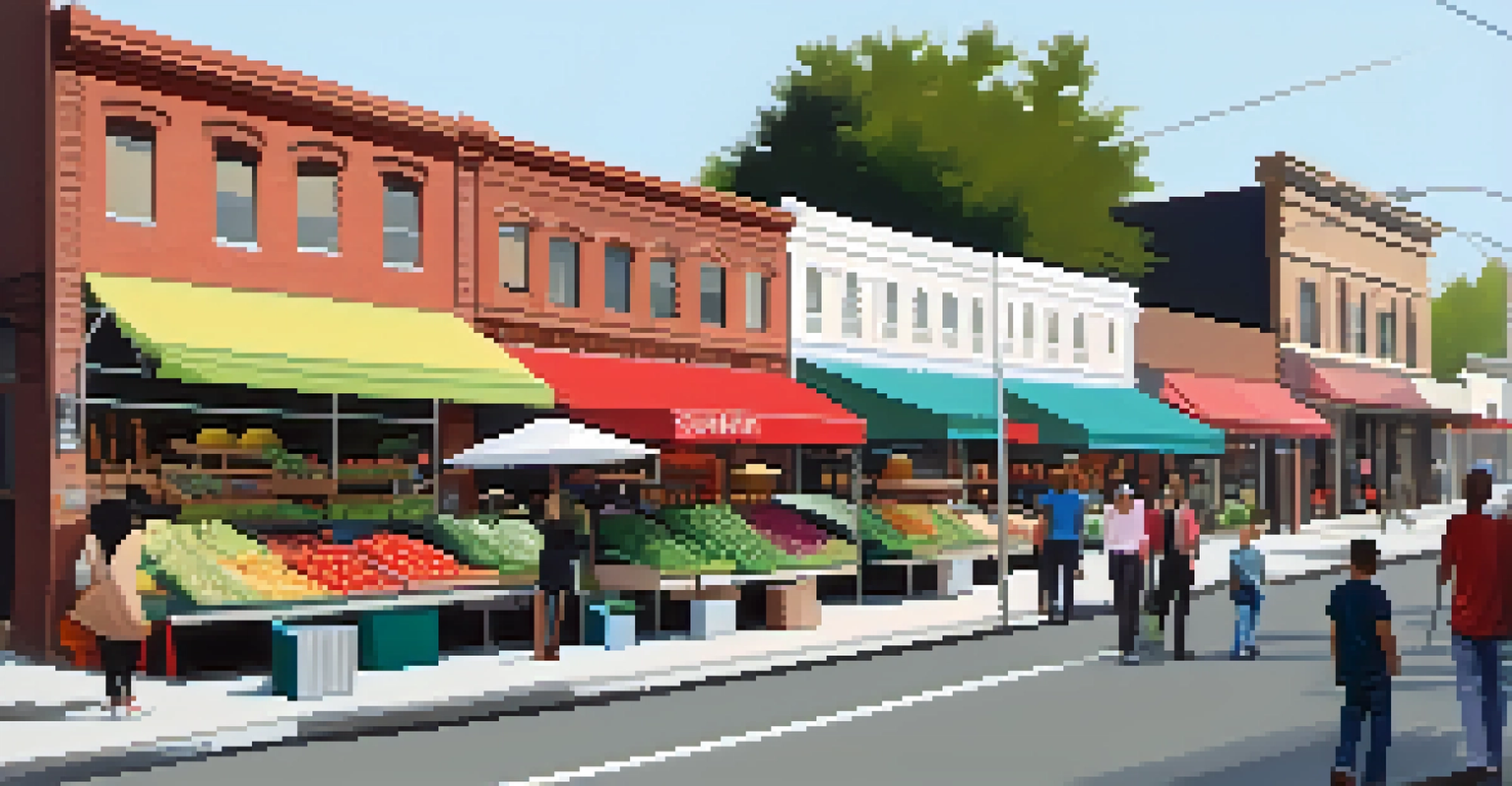The Impact of Gentrification on Minneapolis Neighborhoods

Understanding Gentrification and Its Essence
Gentrification is often described as the transformation of urban neighborhoods through the influx of more affluent residents. This process can lead to the revitalization of an area, bringing in new businesses and amenities. However, it also raises concerns about the displacement of long-standing residents and the loss of cultural identity.
Gentrification is a complex issue that can bring both revitalization and displacement to urban neighborhoods.
In Minneapolis, gentrification has been particularly noticeable in neighborhoods like North Minneapolis and the Phillips community, where housing prices are rapidly increasing. The relationship between economic growth and social equity becomes complex in these scenarios, often leaving vulnerable populations struggling to keep their homes.
Understanding gentrification requires examining both its positive and negative effects. While some celebrate the improvements in infrastructure and safety, others lament the loss of affordable housing and community cohesion.
The Economic Landscape of Gentrification
Economically, gentrification can bring a surge of investment into neighborhoods, leading to improved services and infrastructure. Increased property values often attract more businesses, which can create jobs and enhance the local economy. However, this phenomenon can also lead to skyrocketing rents that push out lower-income families.

For instance, in neighborhoods like Powderhorn, the arrival of upscale restaurants and boutiques has changed the economic landscape significantly. While these developments can create a vibrant atmosphere, they can also alienate residents who can no longer afford to live there.
Gentrification's Mixed Effects
Gentrification revitalizes neighborhoods but can displace long-standing residents and alter cultural identities.
Ultimately, the economic benefits of gentrification must be balanced against the need for affordable housing. Policymakers face the challenge of ensuring that growth does not come at the expense of community stability.
Cultural Shifts in Gentrifying Neighborhoods
As neighborhoods gentrify, cultural shifts often accompany the changes. New residents may bring different lifestyles, interests, and values that can clash with those of long-established communities. This can lead to a dilution of local culture and traditions that have defined these areas for generations.
The challenge lies in balancing development with the needs of existing residents to ensure that growth does not come at their expense.
For example, in neighborhoods like the West Bank, the influx of students and young professionals has altered the cultural fabric, shifting the focus away from long-standing community events and traditions. This can create tension as different groups vie for the recognition and preservation of their cultural identities.
Cultural displacement is a significant concern, as local artists and businesses may be pushed out by rising costs, losing the essence of what made the neighborhood unique. Finding a way to honor and integrate diverse cultural contributions is essential for fostering community harmony.
The Role of Local Government in Gentrification
Local government plays a critical role in shaping the outcomes of gentrification through policies and regulations. Decisions about zoning laws, housing development, and community investment can either mitigate or exacerbate the effects of gentrification. For instance, implementing affordable housing mandates can help preserve low-income options amidst rising rents.
In Minneapolis, city planners have been working to create policies that encourage inclusive growth. Initiatives aimed at protecting tenants and promoting homeownership for low-income families are essential components of this effort.
Economic Growth vs. Affordability
While gentrification boosts local economies, it often leads to rising rents that threaten affordable housing for low-income families.
However, the challenge remains to balance development with the needs of existing residents. Effective collaboration between government, community members, and developers is necessary to create sustainable neighborhoods that benefit all.
Community Responses to Gentrification
Communities impacted by gentrification are increasingly finding ways to respond and advocate for their needs. Grassroots organizations and neighborhood associations play a crucial role in raising awareness and fighting for residents' rights. These groups often work to educate community members about their options and organize efforts to push back against displacement.
For example, in the Cedar-Riverside area, residents have mobilized to protect affordable housing and advocate for equitable development. Community meetings and forums provide platforms for dialogue, where residents can voice their concerns and propose solutions.
Such grassroots activism highlights the resilience of communities facing change. By coming together, residents can influence decision-making processes and ensure that their voices are heard.
The Impact on Housing Affordability
One of the most immediate effects of gentrification is the impact on housing affordability. As neighborhoods become more desirable, property values and rents often increase, making it difficult for low- and moderate-income families to find affordable housing. This can lead to significant displacement as residents are forced to move to less expensive areas.
In Minneapolis, the challenge of maintaining affordable housing is evident, particularly in neighborhoods undergoing rapid change. The struggle for many families is not just about finding a place to live, but also about preserving their community and connections.
Community Engagement is Crucial
Successful navigation of gentrification requires active community involvement and policy innovation to ensure equitable development.
Addressing housing affordability requires innovative solutions such as inclusionary zoning and community land trusts. By prioritizing equitable housing options, cities can work towards ensuring that all residents can thrive, regardless of their income.
Future Directions for Minneapolis Neighborhoods
Looking ahead, the future of Minneapolis neighborhoods in the face of gentrification hinges on community engagement and policy innovation. As the city continues to grow, it is imperative to involve residents in planning processes and decision-making. Engaging diverse voices ensures that development reflects the needs and desires of the entire community.
Additionally, fostering cooperation between developers, government, and community organizations can lead to more inclusive outcomes. Shared visions for neighborhoods can help create spaces that cater to all residents, providing both economic opportunities and cultural preservation.

Ultimately, the challenge lies in finding a balance that allows for growth while maintaining the essence of Minneapolis neighborhoods. By prioritizing equity and inclusion, the city can navigate the complexities of gentrification and create thriving communities for everyone.